What is Fusarium?
Fusarium, also known as fusarium wilt, is a fungi-produced illness caused by fusarium fungi, and it’s quite common in cannabis and other grows. It’s also present in human beings in the form of skin and nail infections (dermatomycosis and onychomycosis).
The first ever fusarium reference can be found in the 30/40 in the URSS in a wheat infection. This infection was so bad that it was later used as a bacteriological weapon.
In cannabis plants, this disease affects mainly the roots and stems; your plants will lose strength, stop growing or flowering, and their branches or the plant in general may even begin to dry up, depending on the intensity of the attack. Fusarium wilt can affect indoor, outdoor and greenhouse grows, as well as appearing in all types of substrates; soil, coco coir, hydroponics etc.
Fusarium wilt is many cannabis growers’ nemesis because it’s one of the most aggressive pathogens, alongside botrytis. Let’s have a look at it’s main characteristics:
- Fusarium tends to live in substrates. It lives off of decomposing organic material. Some Fusarium strains can be dangerous for cannabis plants. Some of the most common types are Fusarium Oxysporum sp., Vasinfectum, and Fusarium Oxysporum Sp. Cannabis.
- This pathogen affects the stem, rotting roots and causing your plants to wilt; these symptoms are easily identifiable in cannabis plants.
- Their spores are easily spread (through water, wind and nematodes) and it’s super hard to cure, which makes preventive measures necessary if you don’t want a future infection.
Fusarium Wilt and Cannabis
Fusarium wilt in cannabis plants can be caused by different types of fusarium fungi:
- Vascular wilting is caused by Fusarium Oxysporum strains that attack the bark on your plants’ stems. This is the most common form of fusarium wilt. It can be seen as a brown stain on the stem. If you were to cut it you would be able to see the vascular damage; the stem is a different colour, turning branches brown in extreme cases.
- Root rot is caused by Fusarium Solani. This causes general plant wilting, with drooping and falling leaves. They tend to begin wilting branch by branch, although on some occasions they may wilt entirely within a question of days.
- Stem affliction, considered a type of plant cancer, is produced by different species: Fusarium Avenaceum, Fusarium Culmorum, Fusarium Graminearum, Fusarium Lateritium, Fusarium Sambucinum and Fusarium Sulphureum. This is easily seen, somethings showing up in intense groups of spores. This strain is rare in cannabis plants.
- Fusarium must be treated in all types of plants, especially in areas with stagnant water such as indoor grows that use flooding systems.
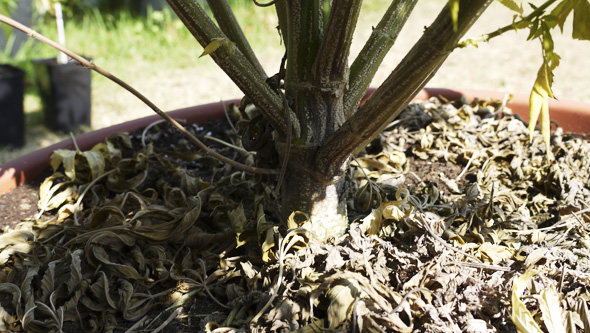
How to Identify Fusarium in Cannabis
Keep in mind that identifying fusarium on cannabis plants means that you haven’t prevented it well enough; we always recommend taking preventive measures against fungal infections in cannabis plants before they appear. These types of infections can grow so fast and easily kill off your plants in no time.
Fusarium wilt can sometimes easily be identified depending on the type of strain and how it’s affecting your plants.
- The first symptom tends to be drooping and discoloured leaves. A few days later the branches will also start to wilt.
- Down at the roots it can be identified by a dark coffee brown colour which indicates root illness, and then the roots will begin to get hard.
- If it’s attacking the stem, it will attack the bark from the inside out. You’ll be able to see a sort of brown stain on the bark. In more advanced cases, the leaves will begin to droop as if they’re not getting water and the branches will begin to dry up.
Stem “cancer” is also easy to see, causing dark stains and a sort of viscous brown liquid. When it’s in an advanced stage, the leaves will begin to turn downwards and the plant in general will look awful. In these types of cases, the fungi gains access to your plant via an open wound or cut on the stem or trunk.
You can see the illness using a microscope, but you don’t need to and we don’t recommend it; you’re adding an extra risk factor, as you may end up accidentally infecting other healthy plants. Save your microscope for healthy plants and for detecting insect infestations.
Fusarium Life Cycle
Fusarium produces three different types of spores; micro and macronidias made up of one and many cells respectively, and chlamydospores which are resistant spores that can survive between 5 and 15 years in the ground. Spores can grow on dead and alive vegetable cells. They tend to get into cannabis via wounds on the stem, leaves or roots.
These spores can grow between 10 and 30 °C, and their ideal reproduction temperature is 20/25°C in a 12/12 light cycle, which makes indoor grows the ideal breeding ground for this pathogen. Fusarium fungi can survive in pH levels between 2.2 and 9.0, although their ideal pH is 7.7.
Fusarium Damage
This type of fungi generally causes plant wilting, although in different ways depending on the type of fusarium:
- Root rot: this can be seen a couple of weeks after the infection has started. Your plants will begin showing signs of stress, which negatively affects growth and can cause it to stop.
- The leaves go yellow (chlorosis) without reacting to nutrients: this also causes them to begin drooping and dying off.
- Plant stems go a brown colour on the inside, and the bark goes a light coffee colour. The plants’ veins begin to necrotize and no nutrients can circulate, killing off the plant. If you were to cut your plant in two you would see the inside of the entire stem beginning to die.
- Affected branches and roots do not recover, and the part of the plant sustained by the affected branches dries up. Branches and roots become woody (lignification).
The biggest problem when it comes to Fusarium wilt is that it can’t be cured and it rapidly affects your plants, which prevents treatment. This is why it’s incredibly important to prevent fusarium from appearing in the first place.
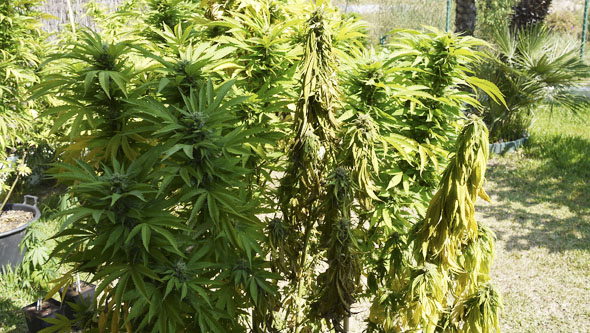
How to Prevent and Get Rid of Fusarium Wilt in Cannabis Plants
- Make sure to keep your growing room, garden or greenhouse spotless. Get rid of old leaves from the ground, as spores can also germinate in dead plant material.
- Change your clothes before going into indoor grows and make sure to wash your hands well before touching your plants.
- Clean all of your growing materials with water and soap and sterilize them before and after using.
- Clean your flowerpots out properly with bleach and lots of water. Keep the walls and floors clean.
- If you use homemade compost or manure, make sure that they have composted correctly and aren’t infested with insects.
- Spray your plant using Propolix. This helps to keep it clean and stress-free, strengthening it against pathogen infestations.
- Use anti-stress products such as Revive, Regulator, Alg a Mic, Bio Weed, Florakleen or Super Vit, among others. These help to strengthen your plant and make it more resistant to fusarium and other fungi infestations.
- The best preventive method is Trichoderma used from seedling and in every transplant. Some of the best beneficial trichoderma/fungi products on the market are Bio 16 Trifag, Aktrivator, Asir Fruit, Bactrex and Piranha.
Fusarium Fungi’s Natural Enemies
You can also use organic products considered to be fusarium’s natural enemies such as:
- Trichoderma: this is the most efficient way to fight fusarium. It’s highly efficient, although we recommend using it after every transplant to make sure that it’s constantly present. Don’t use fungicides or chemical products when using Trichoderma or you will kill it off.
- Citrus Paradisi seed extract.
- Spreptomyces griseoviridis: this fights for space in the substrate and root mass, producing streptomycin, an antibiotic that’s toxic for bacteria. It can be used alongside Trichoderma.
- Bacillus Subtilis QST 713: this is also used for oidium and botrytis; it’s a beneficial bacteria that produces secondary metabolites with anti-fungal properties such as Iturin A and Surfactin. It can be used alongside Trichoderma.
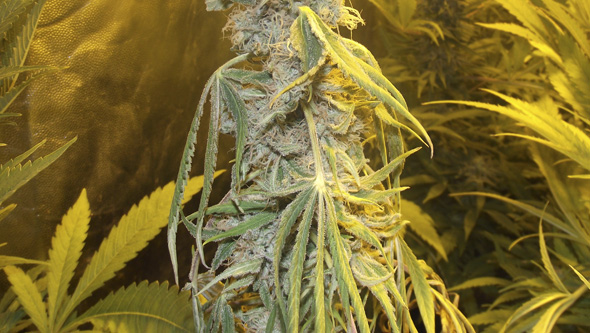
Trichoderma, Fusarium’s Nemesis
Trichoderma is a beneficial fungi that acts in various ways against pathogens, making it an absolute must for cannabis grows:
- It completes for substrate space with fungi such as Fusarium, Pythium, Alternaria etc.
- It produces antibiotics which are toxic for fungi such as trichodermin, gliotoxin, viridin etc.
- Can become parasites for pathogens.
- Stimulates root growth.
- Contributes to mycorrhizae content.
- Decomposes organic material.
- Biodegrades toxins in substrates.
- Does not contaminate and is entirely eco-friendly.
General Advice
- Fusarium can stick around in the soil, in plants, in gardens and it can flow through the wind. Prevention using Trichoderma and other cited methods (like keeping everything clean) is usually enough to avoid this nasty fungus from appearing.
- Keep a careful eye on your plants.
- If you find fusarium in your grow you must act fast.
- Do not reuse substrate from a plant that has been infected with fusarium.
- Avoid it extending to other plants; getting them out of your grow should be your first priority so that the rest of your plants aren’t infected and you can have a healthy harvest.
La Huerta Grow Shop
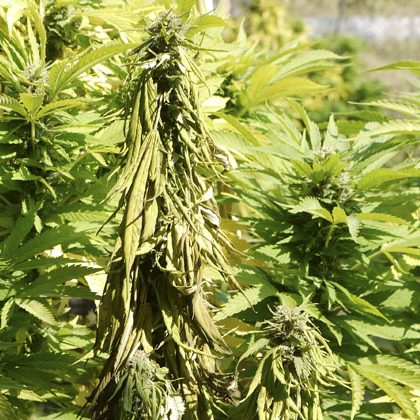

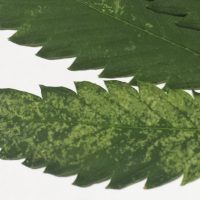
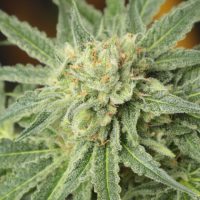
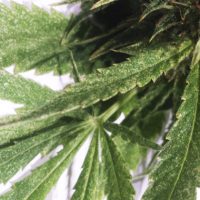
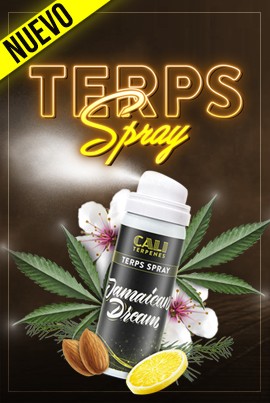
4 responses
One of my 4 plants may be infected with Fusarium.
Only 4 limbs are showing signs of wilting and turn brown. They are 2 weeks from harvest time, the rest of the plant is growing nice and is heavy with buds. Is it safe to harvest the good buds fro this plant?
Hello,
We would never recommend consuming a plant affected by fungi of this nature, as it could negatively impact your health and potentially cause medical issues. As a piece of advice, if you’ve dealt with fusarium, it’s important to thoroughly clean everything that has come into contact with the plant, including the substrate, since the spores can persist for a long time.
Best regards,
La Huerta.
I cut my branches and i see a tad green can i revive them or should i just throw away
Hello.
It depends on whether they are flowering or growing. If they are in the growth phase, using rooting hormones might help revive the broken branch. If they are in the flowering phase, it is much more difficult to revive it.
Regards.